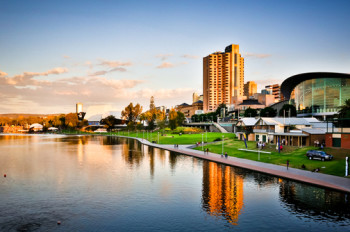OVERVIEW
Australia offers a diverse range of study options for international students, with more than 1,200 institutions and over 22,000 courses to choose from. You can study at all levels of education from primary and secondary school, to vocational education and training (VET), from English language courses to higher education (including universities). And regardless of what you are studying or how long you are studying for, Australia’s laws promote quality education and protection for international students. This includes the Education Services for Overseas Students (ESOS) Act 2000(opens in a new window) and the National Code of Practice(opens in a new window) for Registration Authorities and Providers of Education and Training to Overseas Students 2007 (National Code). These provide nationally consistent standards for providers of education and training for international students.
As an international student on a student visa, you must study with an institution and in a course that is registered on the Commonwealth Register of Institutions and Courses for Overseas Students (CRICOS). CRICOS registration guarantees that the course and the institution at which you study meet the high standards expected by international students. You can search for courses and institutions here on the Study in Australia website.
Along with the ESOS Act and National Code, there are also regulatory and quality assurance organisations for higher education and VET institutions. These government organisations are responsible for registration/re-registration of institutions and accreditation/re-accreditation of courses. These organisations are:
- Higher education – Tertiary Education Quality and Standards Agency (TEQSA)(opens in a new window)
- VET – Australian Skills Quality Authority (ASQA)(opens in a new window)
So no matter the type of course you want to study, how long you want to study for or where you want to study, you can be assured that in Australia you will have a high quality and rewarding study experience.
Quality Assurance
Australia has a national regulatory and quality agency for higher education – the Tertiary Education Quality and Standards Agency (TEQSA)(opens in a new window). It was established by the Australian Government to monitor quality, and regulate university and non-university higher education providers against a set of standards developed by the independent Higher Education Standards Panel.
In addition, the following student rights are protected by law under the Education Services for Overseas Students (ESOS):
- The wellbeing of all international students.
- The quality of students’ education experience.
- The provision of up-to-date and accurate information.
EDUCATION
Study in Australia
For students interested in studying in Australia, Study in Australia Section is designed to keep you informed on what to expect down under. There are thousands of courses offered, and this guide is ideal in helping you from beginning to end. The Australian school search can help you find the right school, our resource pages will help you study, work, and live in Australia, and we even have information on what to expect after graduation. Find all you need to know about studying in OZ.
Why Study in Australia
When people think of Australia, they see wide open spaces of outback bush, kangaroos, koalas, and clean air and water. Australia has much more to offer than the usual expectations. Many international students are choosing to study in Australia because of its friendly, laid-back nature, excellent education system, and high standard of living.
Growing Destination
Global Recognition
Cost of Living
Diversity of Education
Technology
Work
Choosing the right Progam
The Australian system offers the international student many options to pursue, from ESL programs to graduate degree programs. Australia also has very strong vocational and technical programs through the Technical and Further Education (TAFE) system. For Information on List of programs you can apply for Contact us now at : info@oaastudy.com
VISA INFORMATION
How to Get an Australian Student Visa
What is a Genuine Temporary Entrant (GTE)?
Introduced in November 2011, the Genuine Genuine Temporary Entrant requirement says that the visa applicant must be able to demonstrate a genuine intention to stay in Australia temporarily for the purpose of study, or to accompany a student as a dependent (i.e. spouse or child) or as a guardian. The decision-makers at the Department of Home Affairs will consider the following factors:
- Circumstances in your home country
- Potential circumstances for you in Australia
- Value of your chosen course to your future
- Your immigration history
In order to determine whether you meet the GTE requirement, you may be asked to attend an interview at your nearest Australian embassy or consulate. Some applicants will only need to fill in a visa application form.
Completing an Australian student visa application form
All international students apply for the same visa: the Student Visa (Subclass 500), which you must apply for online.
Before applying for a visa, you’ll need to obtain a Confirmation of Enrollment (COE) or a Letter of Offer confirming you have been accepted into a course registered under the CommonWealth Register of institution of Courses (CRICOS). The COE will be in the form of an online code that you will need to enter into the appropriate section in the online visa application. You may also need to pay a deposit towards your tuition fees. You will be able to change course afterwards to study in Australia at the same or a higher study level, but you’ll need to apply for a new visa if you’re changing course to a lower level on the Australian Qualification Framework(AQF) or a non-AQF level course (unless changing from a PhD to a master’s). You may also package your studies by studying two or more courses on your Student Visa (Subclass 500), where there is clear progression from one course to another. All information here are provided to you for information purposes,to learn more about Visa applications for Study and work Email us at :









